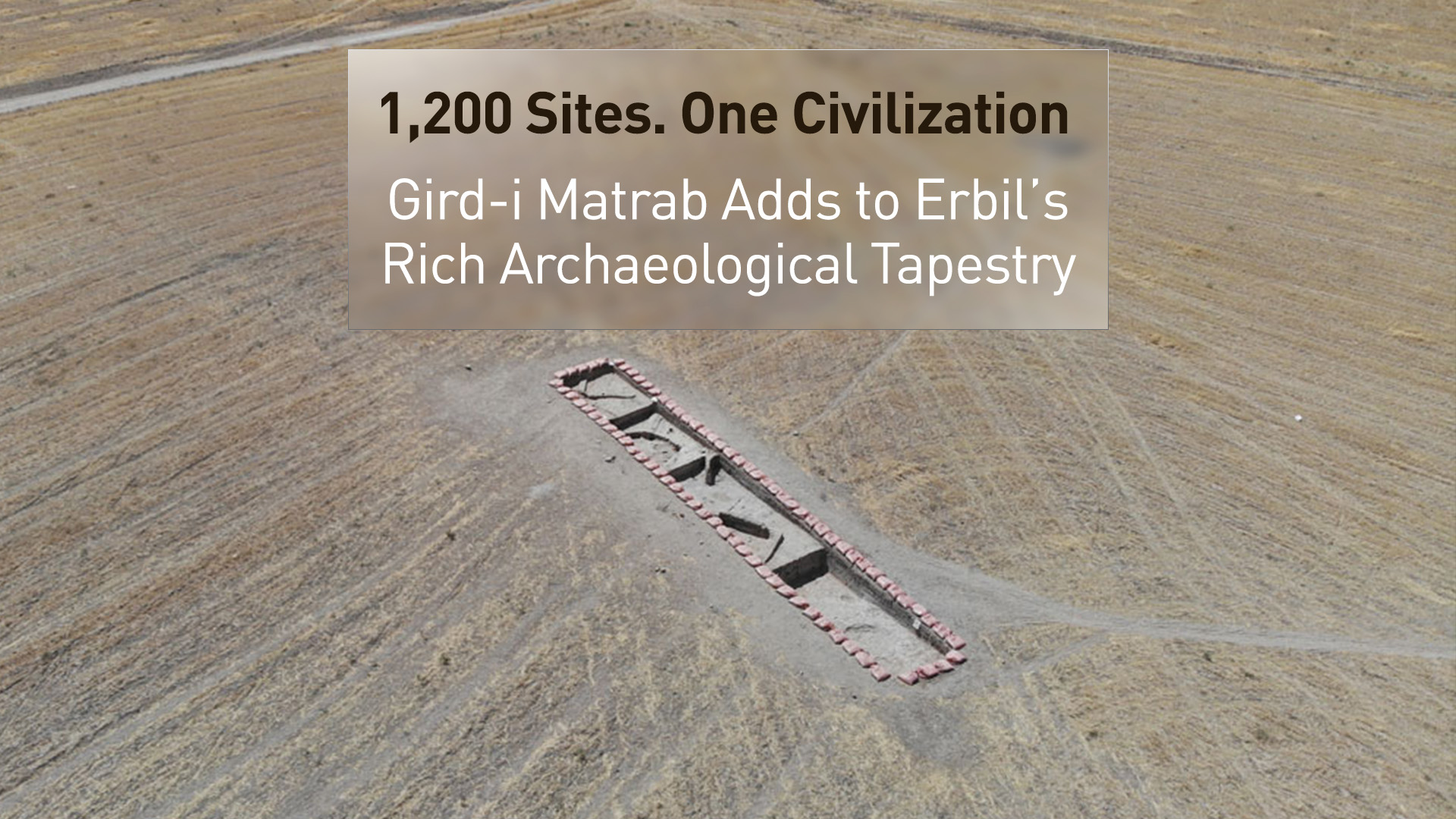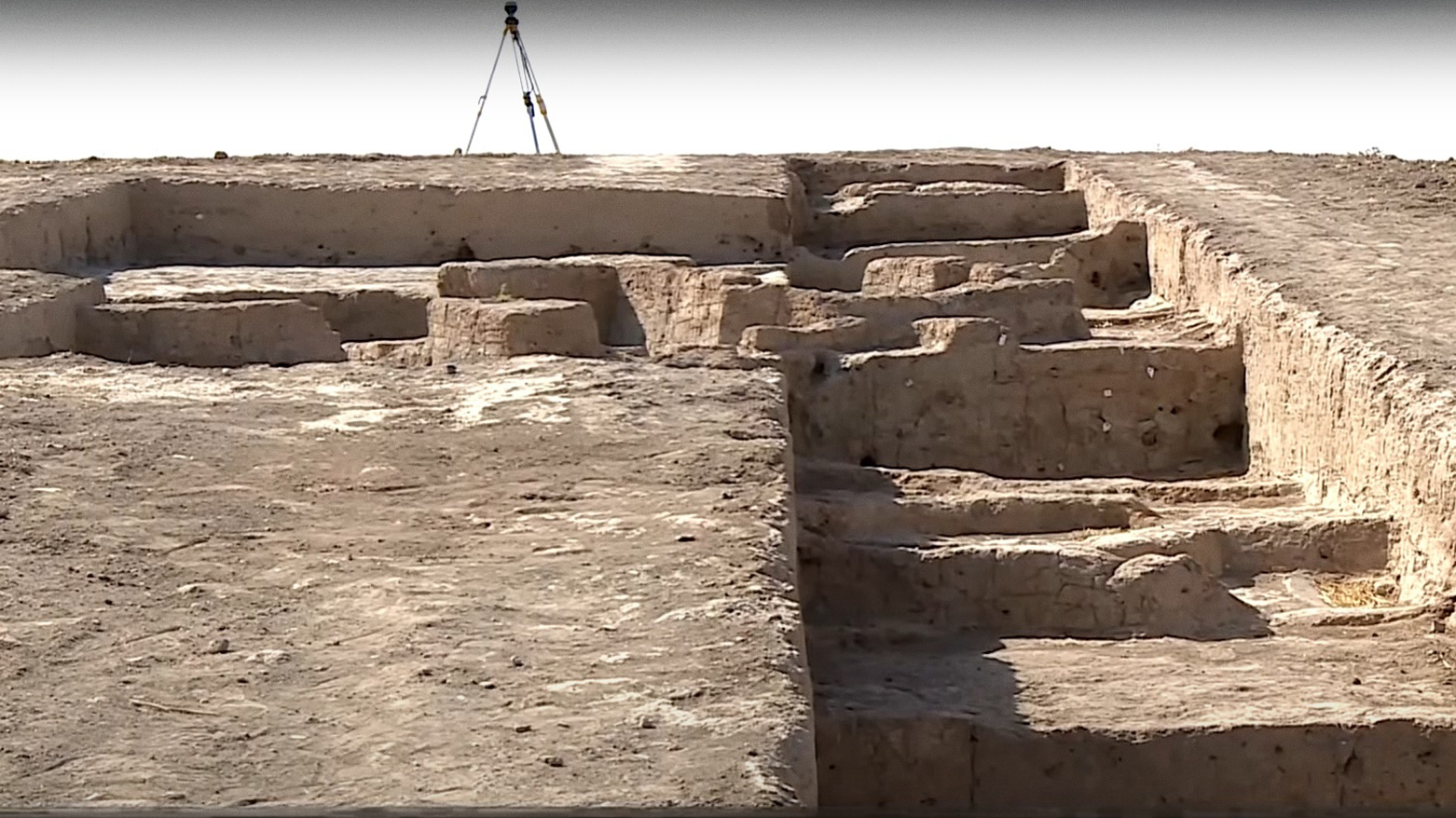Vast Multi-Era Settlement Uncovered Near Erbil
Archaeologists uncovered a vast settlement in Erbil, preserved by an ancient quake. Findings span from 5000 BCE to the Parthian era and include a Hellenistic complex with a child's burial and a prehistoric house with stone tools, revealing millennia of Kurdistan's history.

ERBIL (Kurdistan24) – An ancient earthquake that shook the Erbil Plain millennia ago has inadvertently preserved a sprawling prehistoric settlement, where archaeologists are now uncovering a rich history of occupation spanning thousands of years, from the late 6th millennium BCE to the Parthian era.
The site, known as Gird-i Matrab, is located about 30 kilometers south of the regional capital in the Shamamok plains. Comprising six low mounds orbiting a seventh, central mound, the settlement was first identified in 2012 by the Erbil Plain Archaeological Survey and is considered a key landmark in the cultural heritage of Iraq and the Kurdistan Region.
Recent excavations have revealed distinct chapters of the site's long history. In 2021, a team conducted geophysical surveys on one mound, identifying part of a Hellenistic quarter dated between 350 and 280 BCE. Excavations there have since revealed various mudbrick structures with stone foundations, including a kitchen, a storage room, and service areas. The rooms open onto a courtyard that yielded two perfectly preserved kilns and a tannur (clay oven).
The floors of two rooms were found in excellent condition, made of cobblestones, potsherds, and animal bones. Beneath the courtyard's floor, the team made a poignant discovery: the remains of a child, approximately one year old, buried in a jar, a practice known as an enchytrismòs burial.
In 2023, explorations on a different mound began to peel back even older layers of history. This work revealed several Late Chalcolithic occupation phases, dating between the early 5th millennium BCE and the end of the 4th millennium BCE.
"We have been excavating at this mound for four seasons," said Rocco Palermo, project director and Assistant Professor of Classical and Near Eastern Archaeology from Bryn Mawr College. "So far, we have found many archaeological remains that date back to approximately 4000 BC."

These prehistoric levels are characterized by domestic units made of mudbricks, hearths for cooking, and kilns for pottery production. Within what appears to be a large house consisting of several rooms, a storeroom contained numerous stone-made items, including knives, scales, and jars.
The earliest phase of settlement found at Matrab so far dates to the Late Chalcolithic 1 period (mid-5th millennium BCE). This layer shows signs of substantial destruction and yielded numerous clay bullets, artifacts common in the preceding Ubaid period. The site was eventually abandoned in the late 4th millennium BCE before being re-occupied in the Iron Age and experiencing significant expansion during the Seleucid and Parthian periods, when it grew to cover approximately 25 hectares.
Officials stress the importance of these finds for documenting the region's heritage. "Our goal in discovering these sites is to understand the history of Kurdistan," Nader Babakr, the Director-General of Antiquities in Erbil, told Kurdistan24. He noted that excavations are a daily activity across Kurdistan.
After artifacts are unearthed, specialized committees collect and reassemble broken pieces. Damaged items undergo restoration before all findings are registered in the historical records of the Kurdistan Region.
Gird-i Matrab is one of more than 1,200 archaeological sites registered in the Erbil Plain, adding to the 12 other major mounds already documented within the province’s boundaries.
